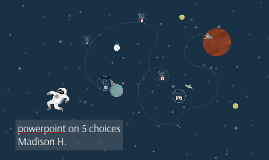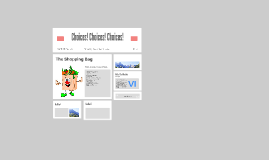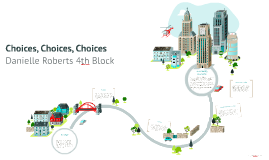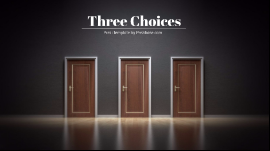powerpoint on 5 choices
Transcript: Symptoms:anemia (low numbers of normal red blood cells) and repeated periods of pain. Causes: Inherited by parents. Frequency/history: Approximately 70,000-100,000 Americans have sickle cell anemia. Treatment: medications, blood transfusions, and rarely a bone-marrow transplant. Symptoms: an absence of color in the hair, skin, or eyes. Vision problems. Causes: A defect in one of several genes that produce or distribute melanin causes albinism. Frequency/ history: 1 in every 17,000 to 20,000 people have Albinism. treatment: protective clothing and sunscreen to protect the skin from UV rays, surgery on the muscles of the eyes to correct abnormal eye movements. powerpoint on 5 choices Madison H. Down Syndrome: Symptoms: Low muscle tone, Short, stocky arms and legs, Slanted eyes, Heart defect, depression Causes: caused by extra abnormal cell division. Frequency: approximately 6,000 babies are born in the United States each year with Down syndrome Treatment: making sure that your child has regular medical checkups, helping your child develop, watching for early signs of health problems, and finding support. Muscular Dystrophy: Symptoms: NO Blood clotting, BLEEDING NONSTOP. Causes: caused by a genetic change. Frequency\history: hemophilia in the United States is estimated to be about 20,000 individuals. Worldwide incidence of hemophilia is not well known, but estimated at more than 400,000 people. Treatment: Treatment includes injections of a clotting factor or plasma. Sickle Cell Anemia HEMOPHILIA: Albinism: symptoms: progressive muscle weakness,Frequent falls Difficulty getting up from a lying or sitting position Trouble running and jumping. Causes: occurs when one of these genes is defective. Frequency: 1 in every 3,500 to 5,000 boys, or between 400 and 600 live male births each year in the United States. Treatment: Medications,Therapy, Surgery

















